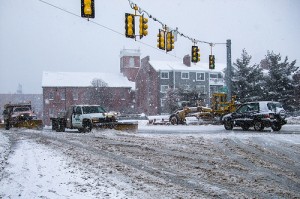7 + Tips For Driving On Snow Or Ice
 Winter is just about upon us. Snow and ice, especially at night, can produce treacherous driving conditions. The best advice for driving in bad winter weather is don’t, if at all possible. If you can, wait until the DOT trucks have had time to plow and salt the road.
Winter is just about upon us. Snow and ice, especially at night, can produce treacherous driving conditions. The best advice for driving in bad winter weather is don’t, if at all possible. If you can, wait until the DOT trucks have had time to plow and salt the road.
If you absolutely have to drive, the following tips for driving on snow or ice may make your drive a safer one.
- Drive slower and leave extra room to stop.
- Give your self extra room between you and the car in front of you.
- When stopping, apply breaks gently, if you begin to slide, let up on the brake.
- Make sure your wipers are in good shape.
- Don’t use cruise control.
- If you can, use low gears, especially on hills.
- Be careful of bridges and overpasses: they freeze over first, even at temperatures above freezing.
If you find yourself sliding, the following steps may help:
- Take your foot off the gas pedal.
- Turn into the direction you want to go. For instance, if the back of your car is sliding to the left, turn your wheels to the left.
- If as you recover, the rear of your car begins to slide the other way, turn your wheel toward the same side.
- If your car has anti-lock brakes, do not pump them. Apply steady pressure.
If you find yourself stuck, the following tips may help:
- Do not gun your engine, spinning your wheels: it digs you in deeper.
- Turn your steering wheel back and forth, turning the wheels, clearing some of the snow out of the way.
- Easy your car out with gentle pressure on the gas pedal.
- Use a shovel to clear snow away and use sand, gravel, kitty litter or salt in the paths of the wheels.
- If your car is an automatic, before you attempt to rock your car forward and back, read the owners manual.
Above all else, go slow and watch out for the “other guy!” If you find yourself the unfortunate victim of an car accident, call us immediately to schedule an examination. Immediate care decreases the chances of developing long term pain cycles.
